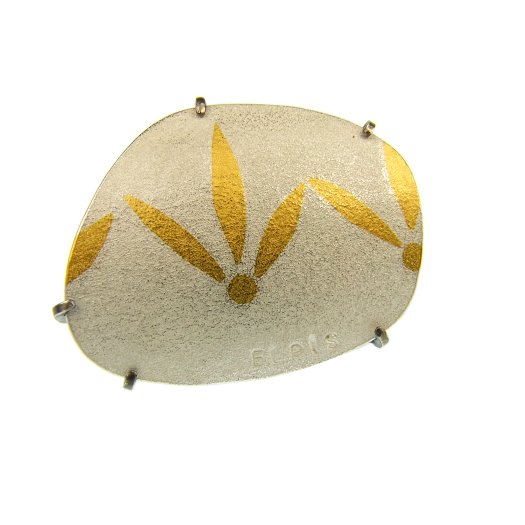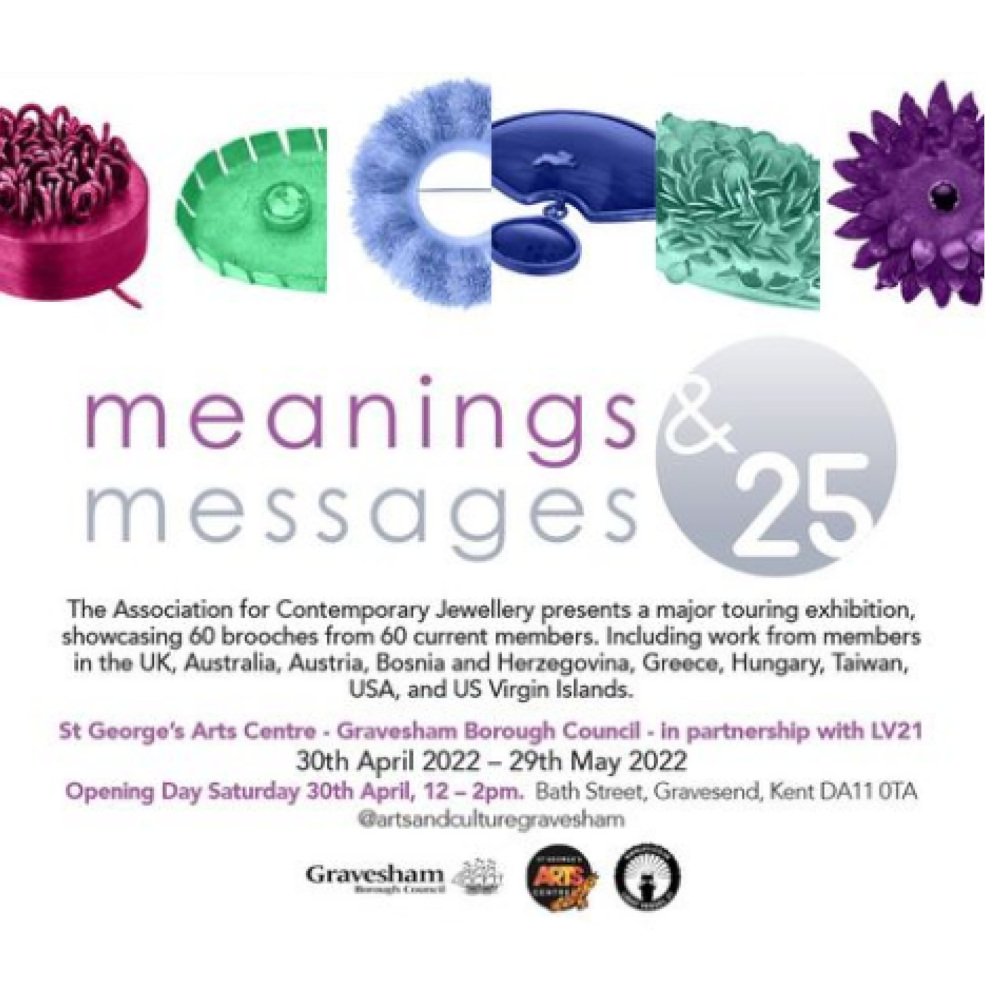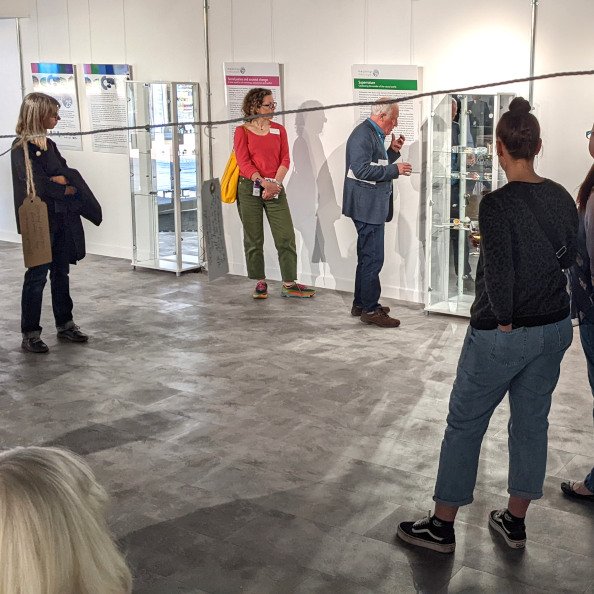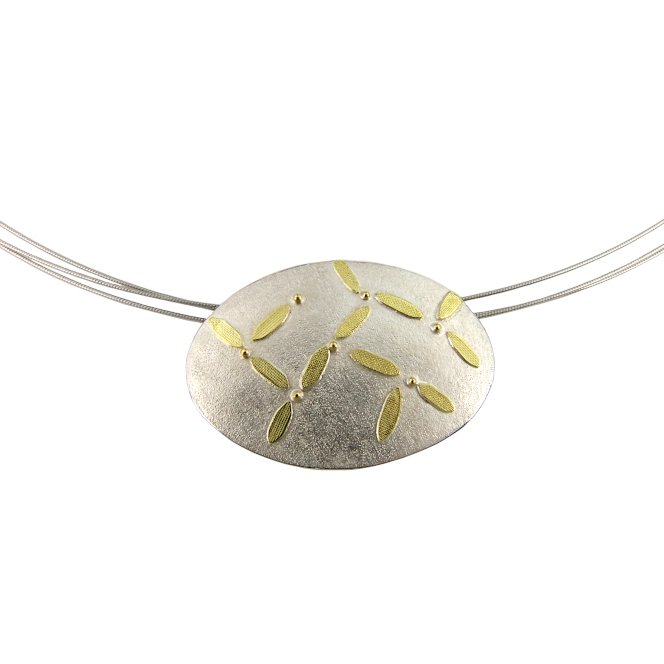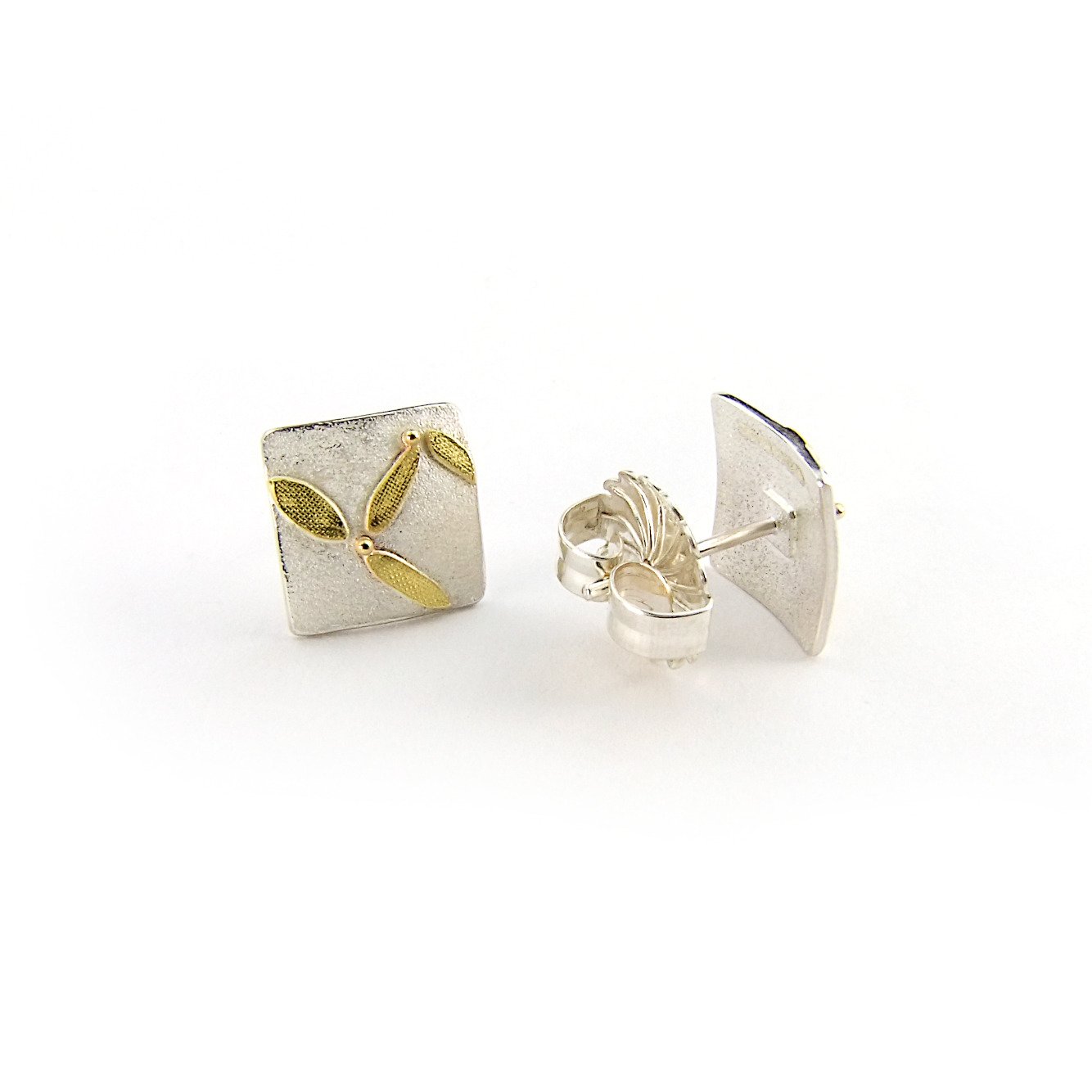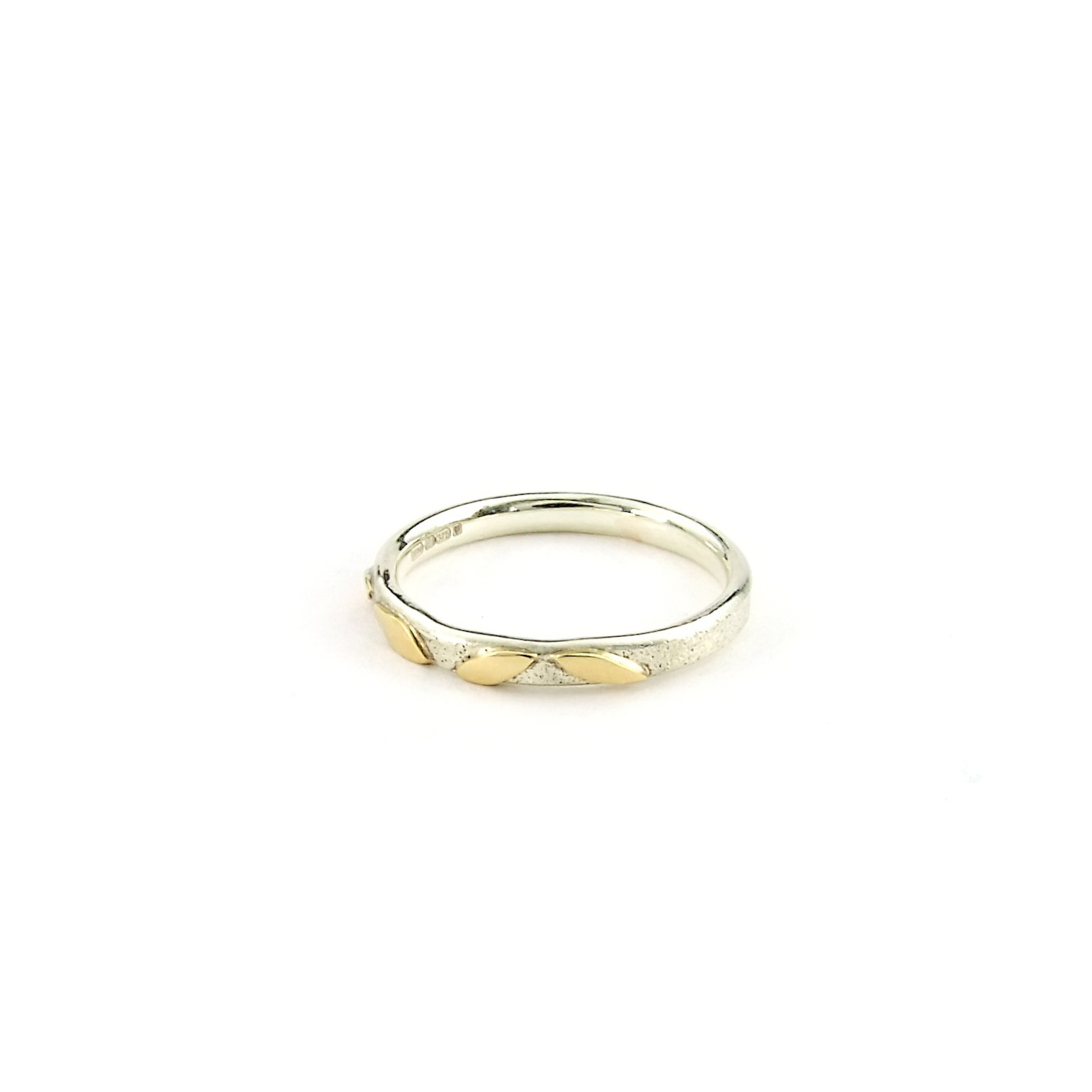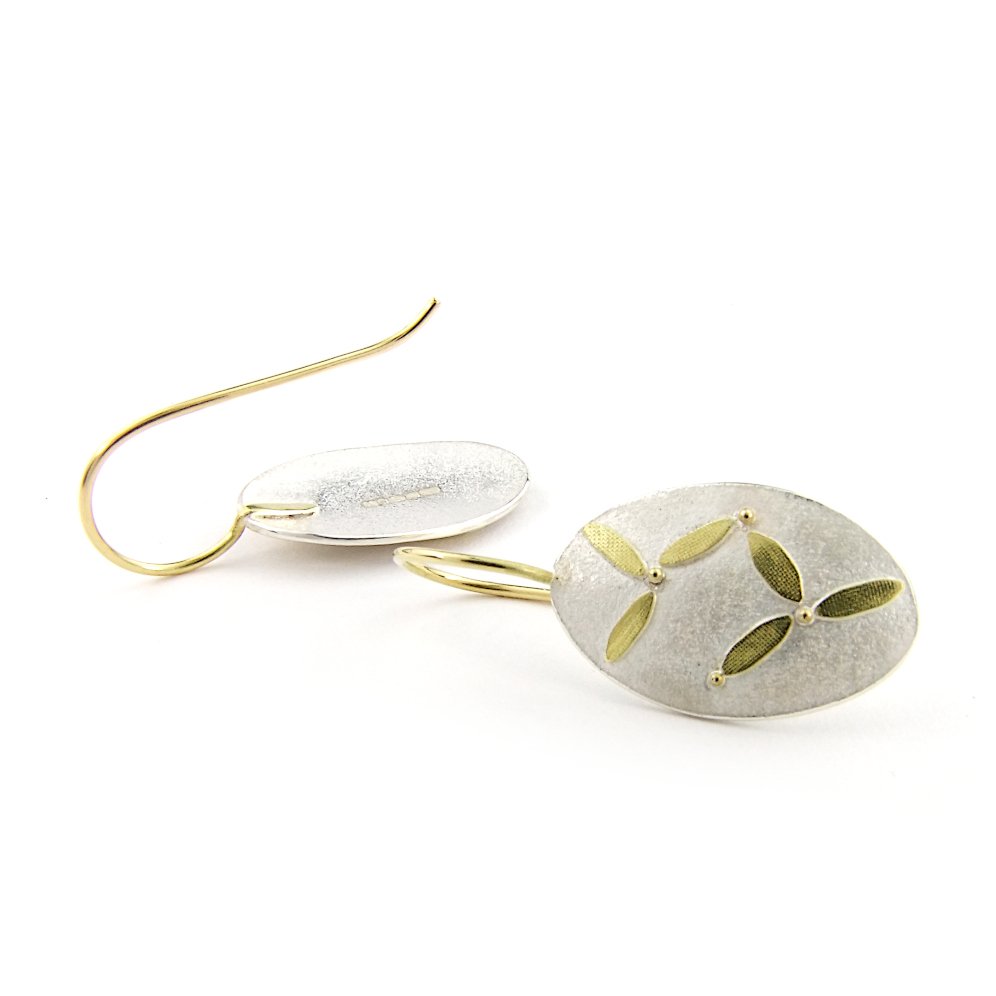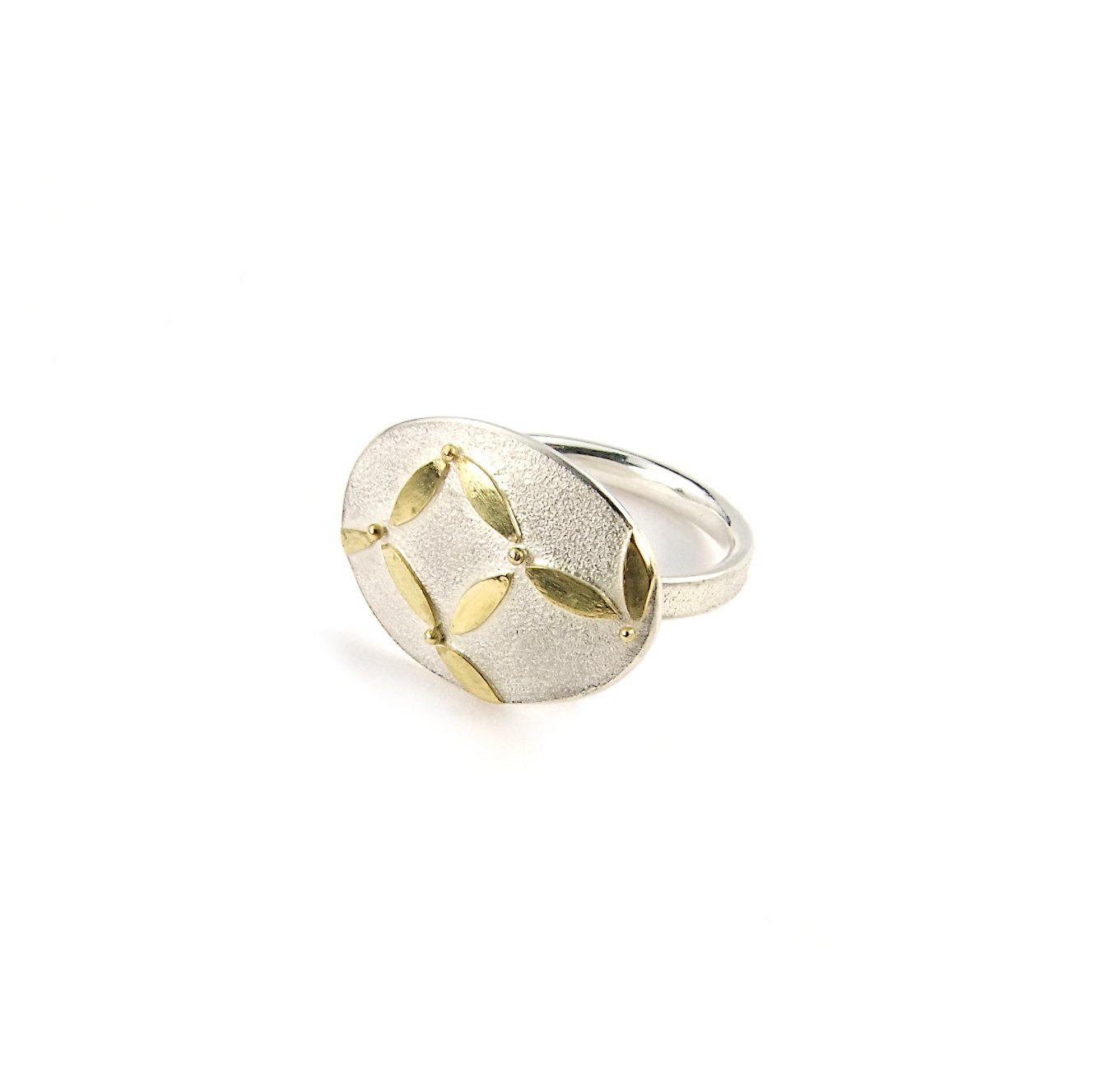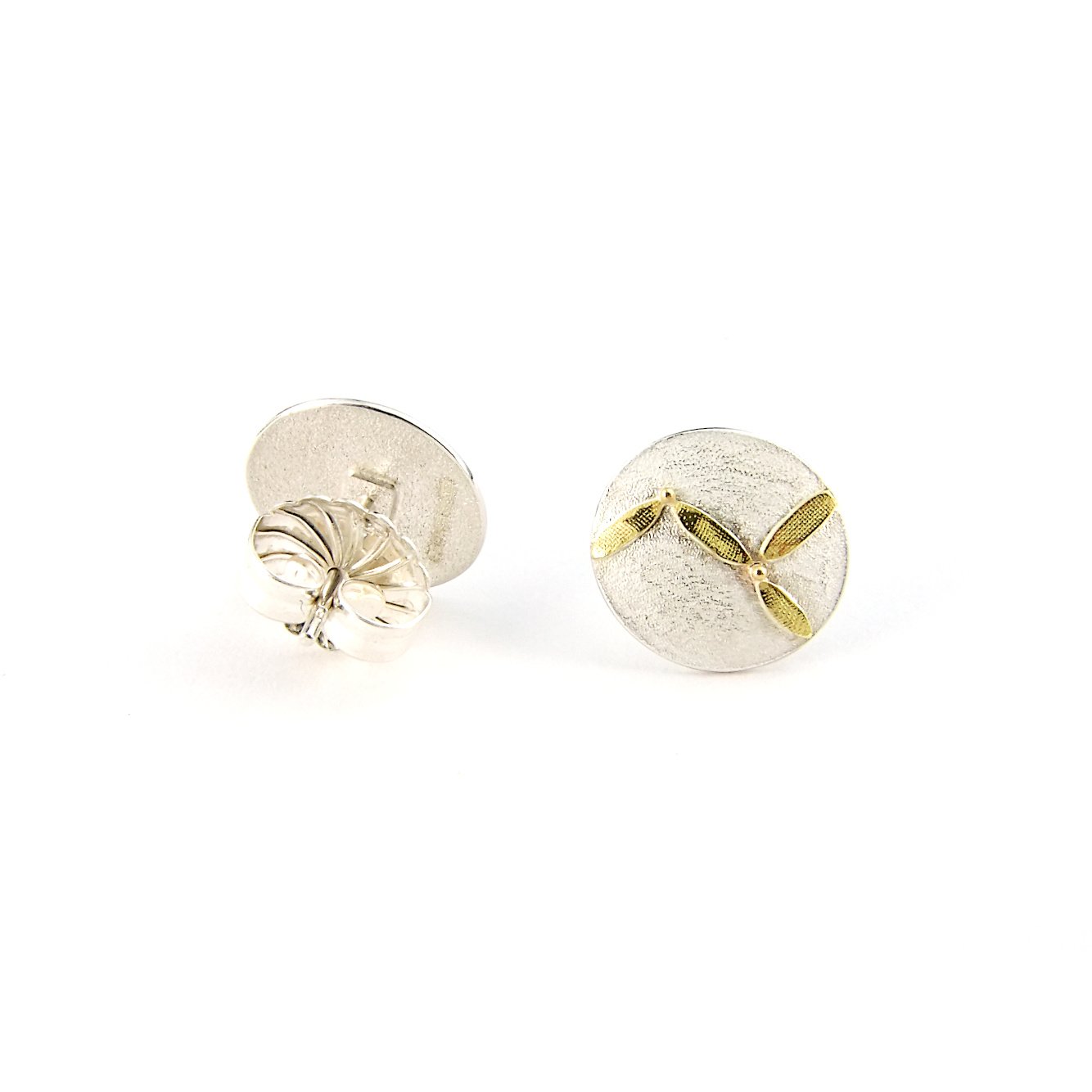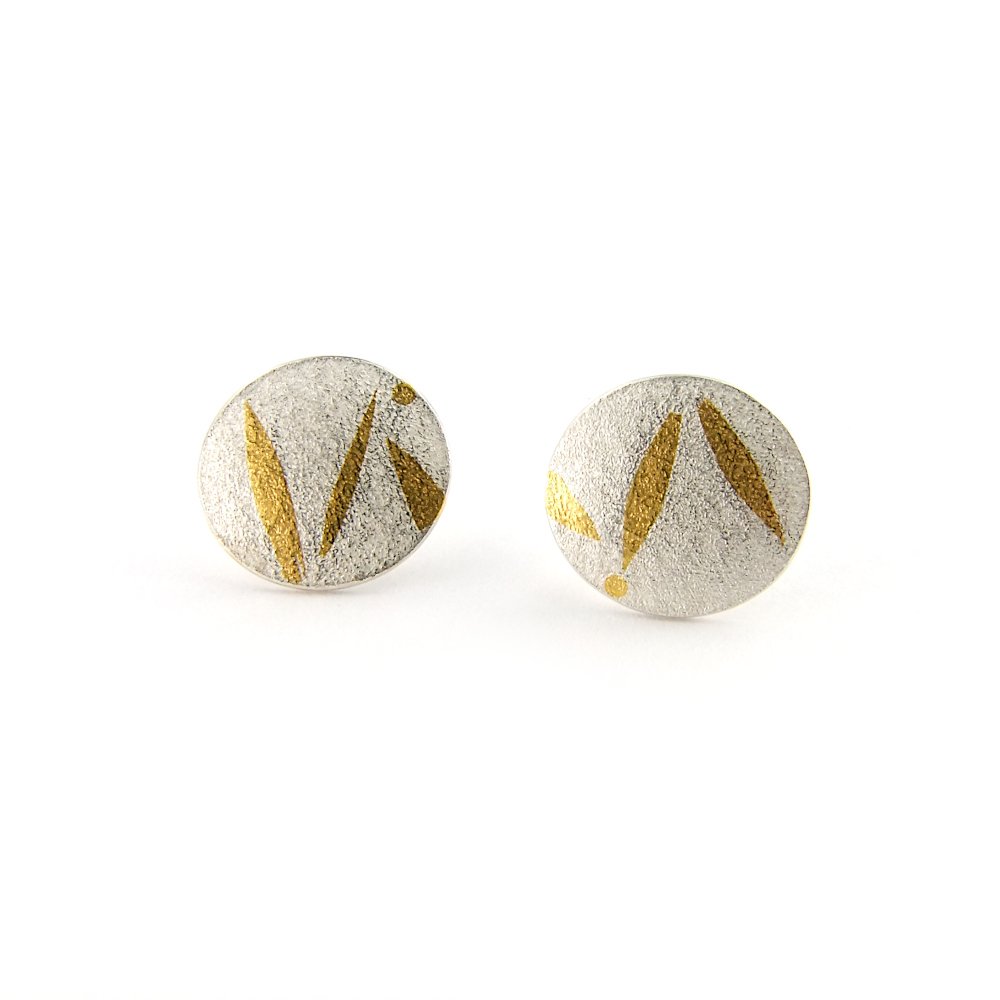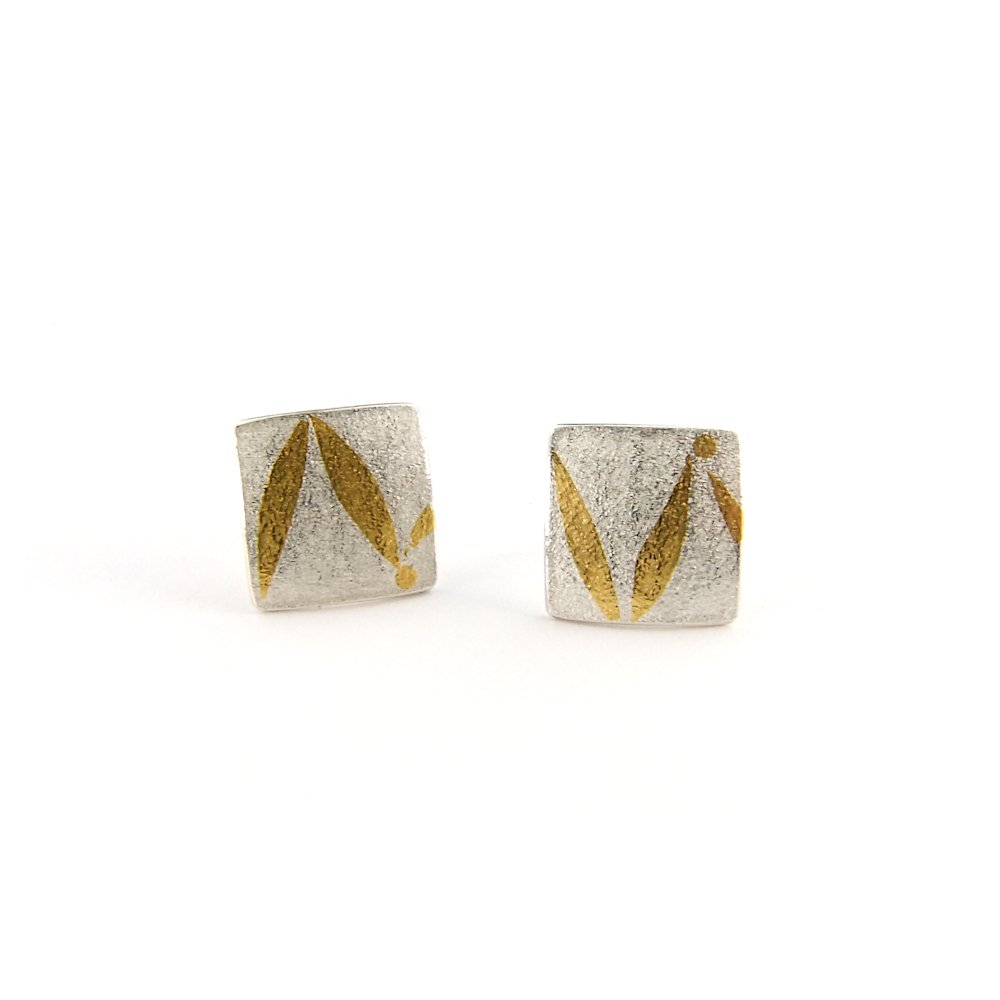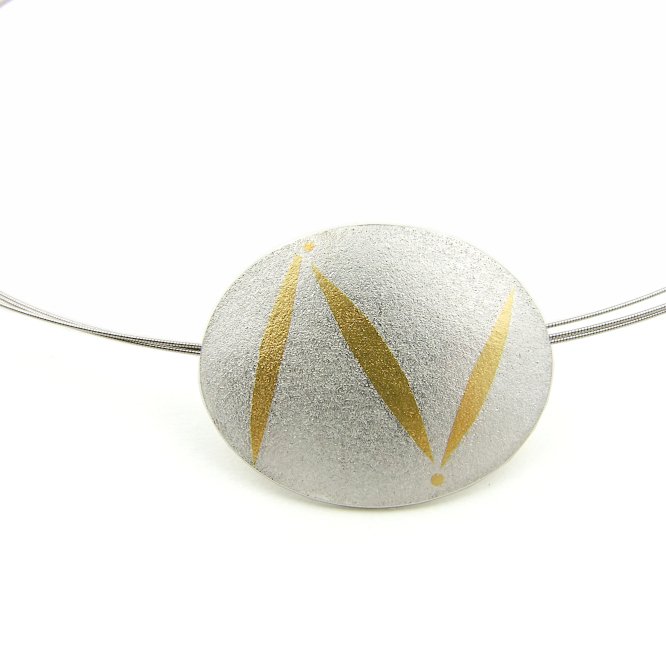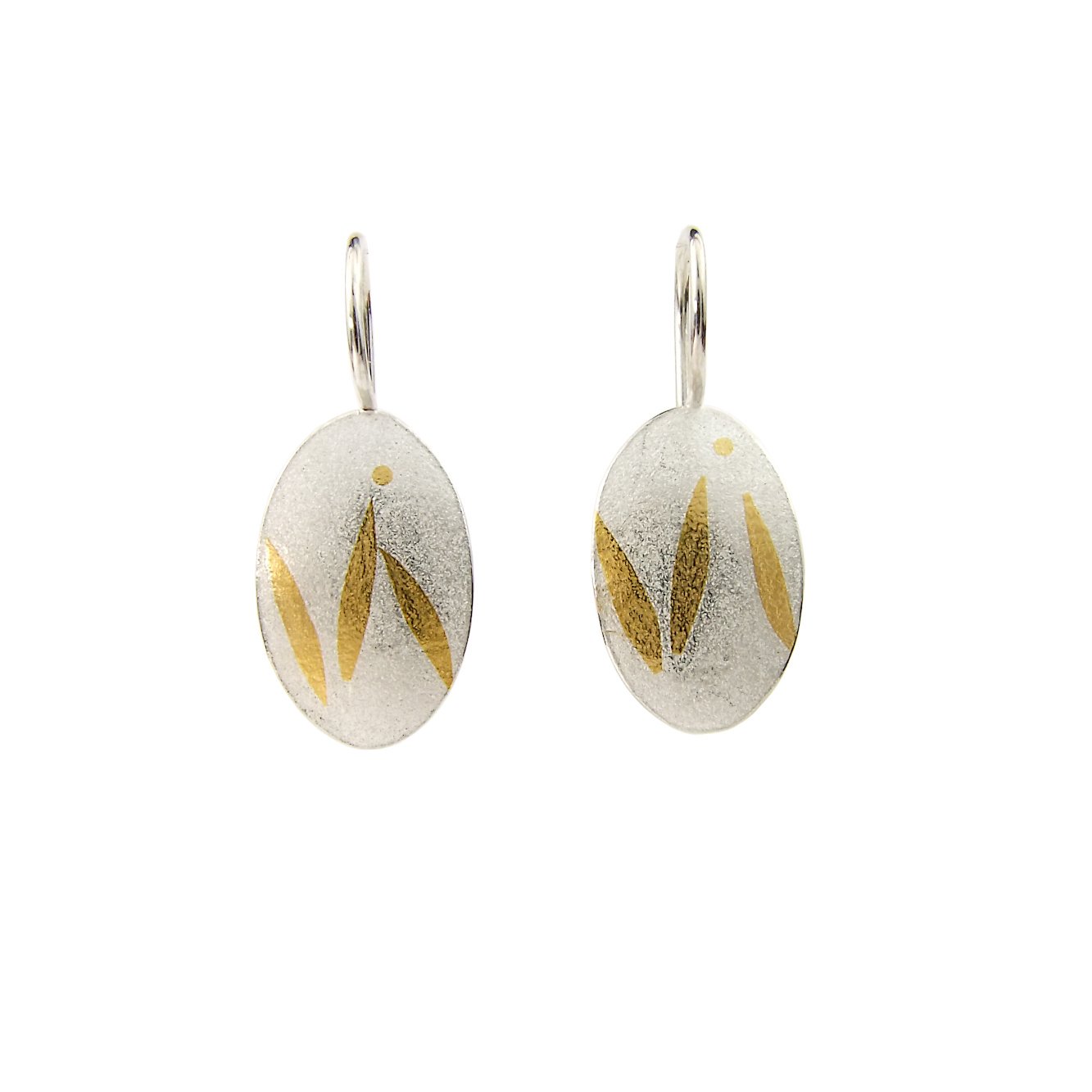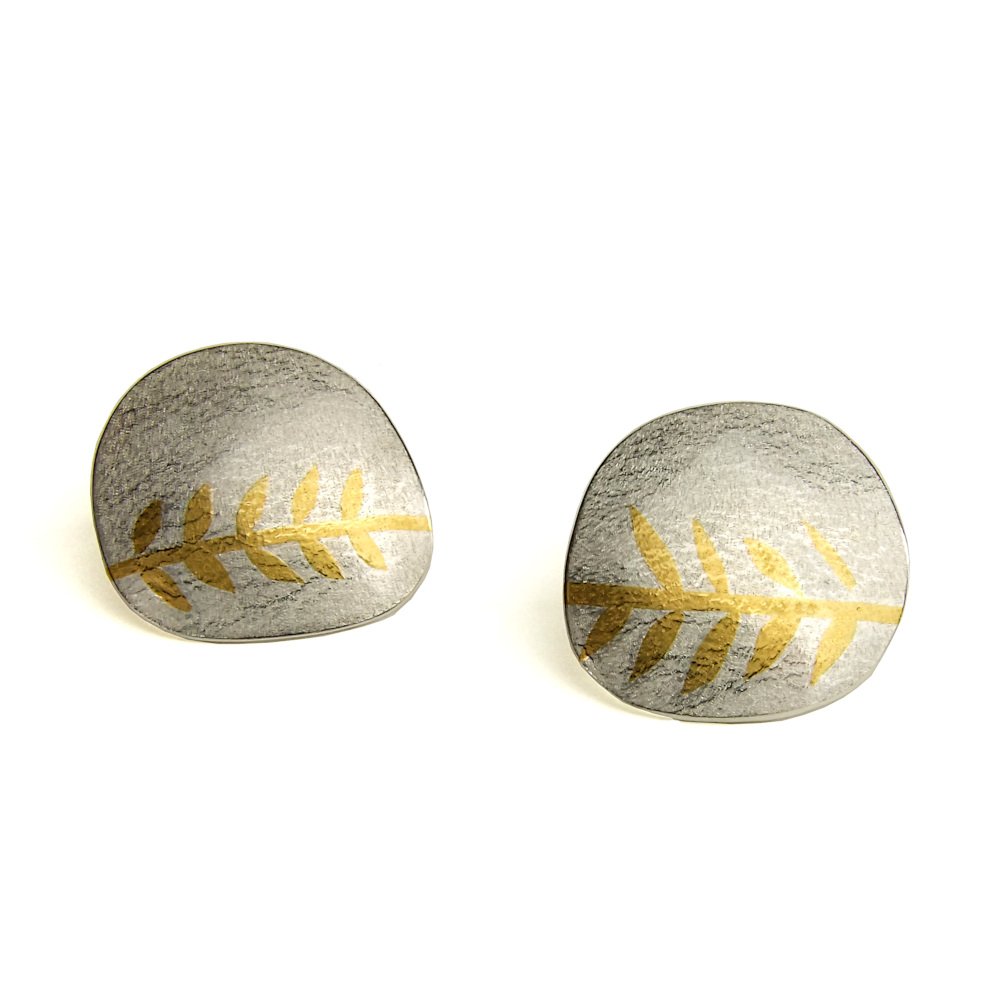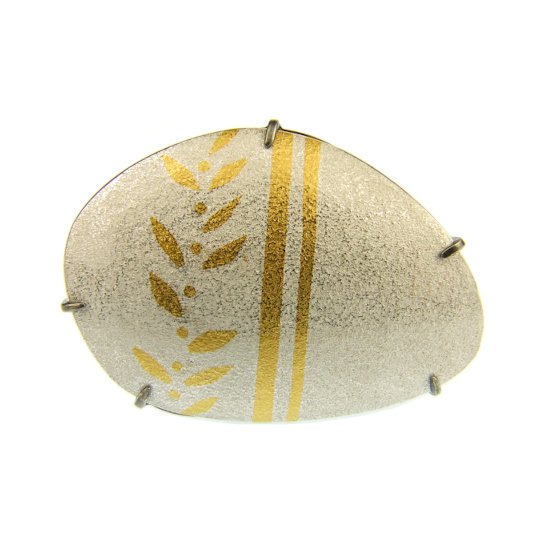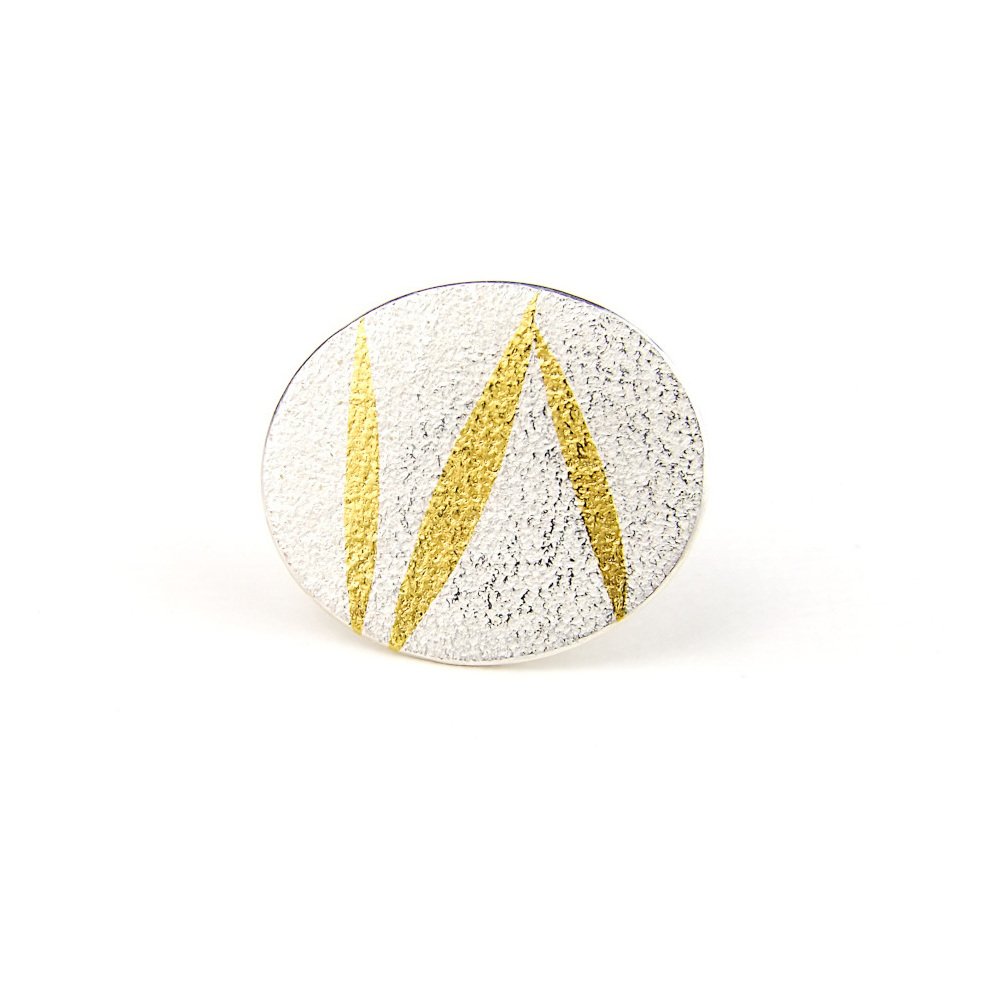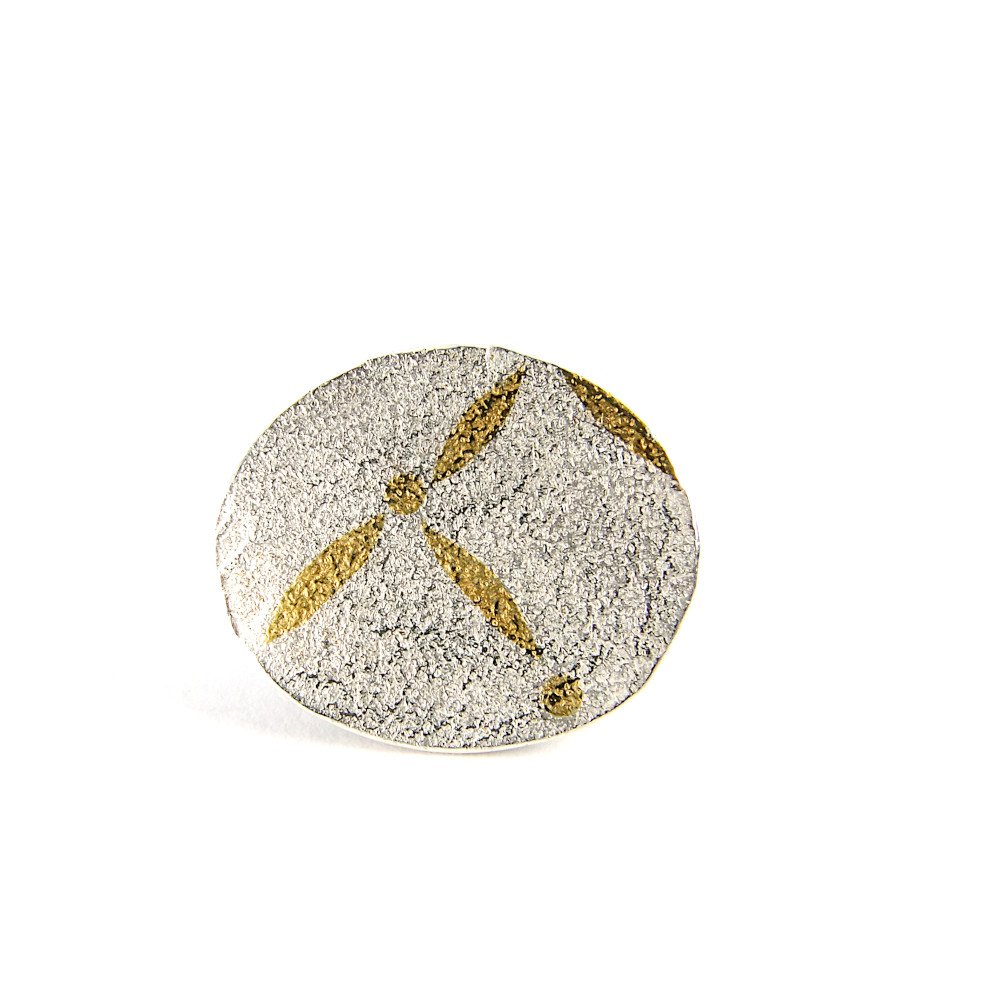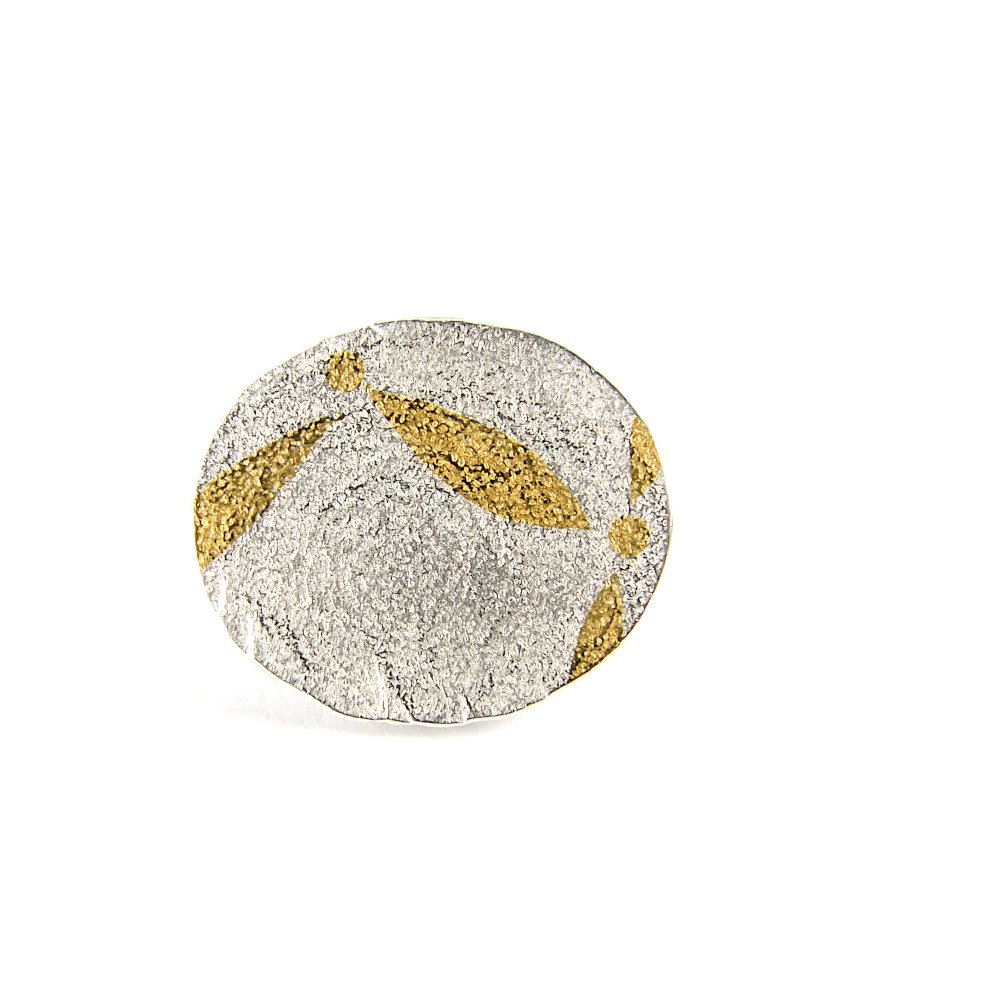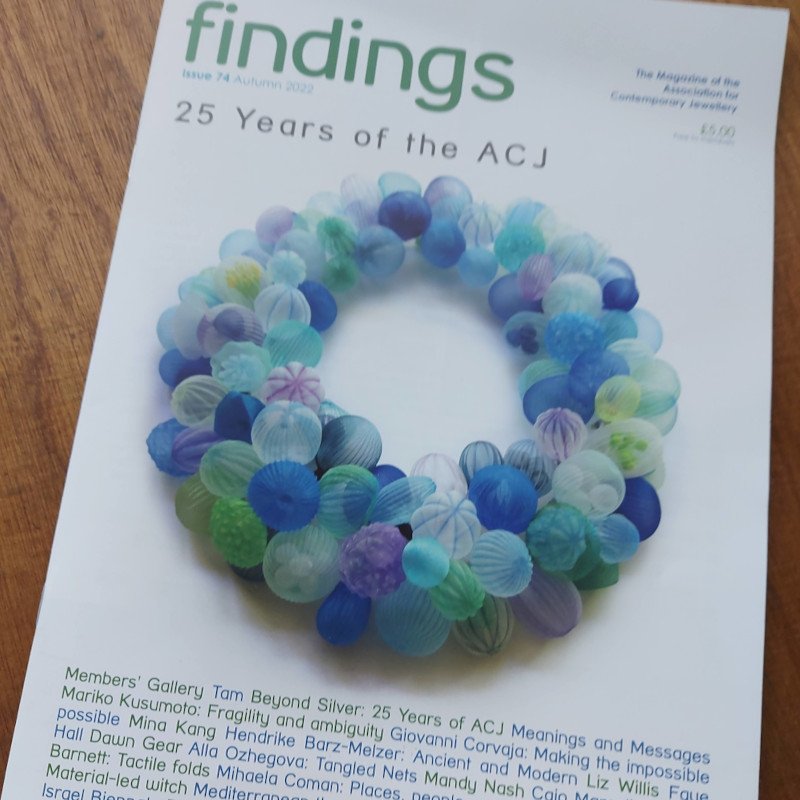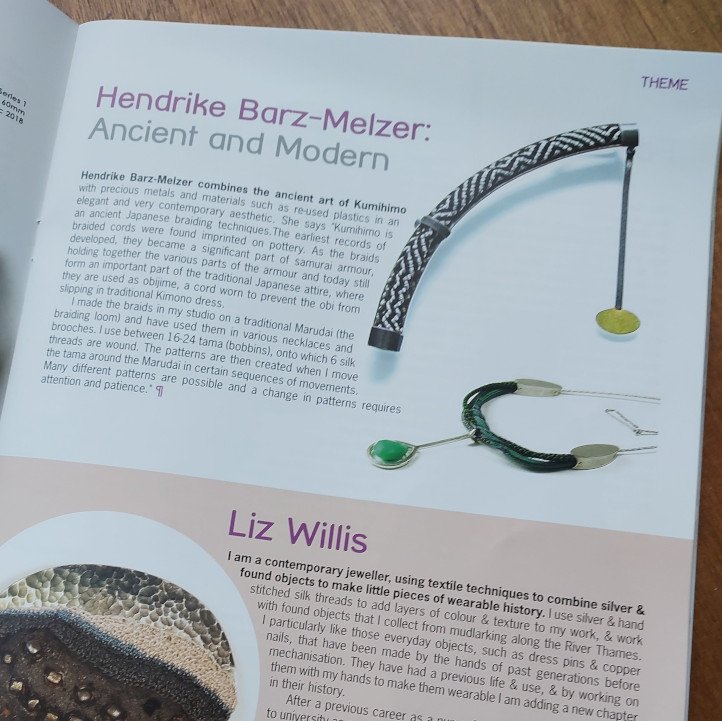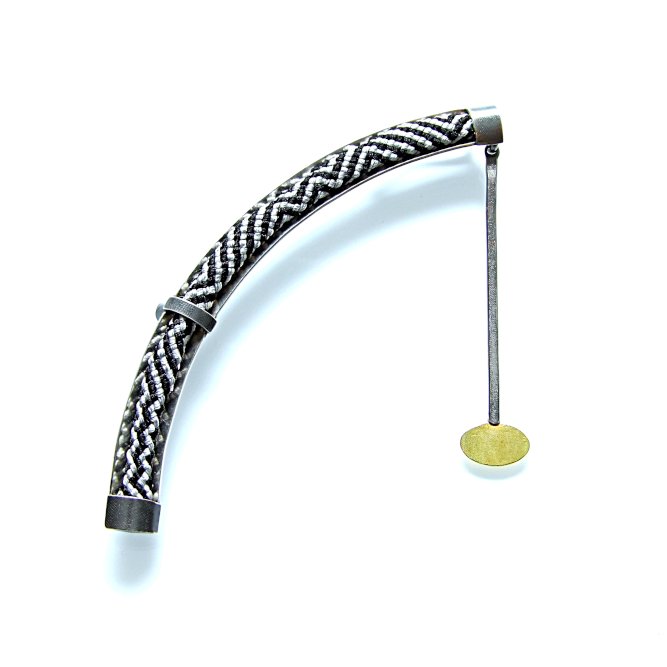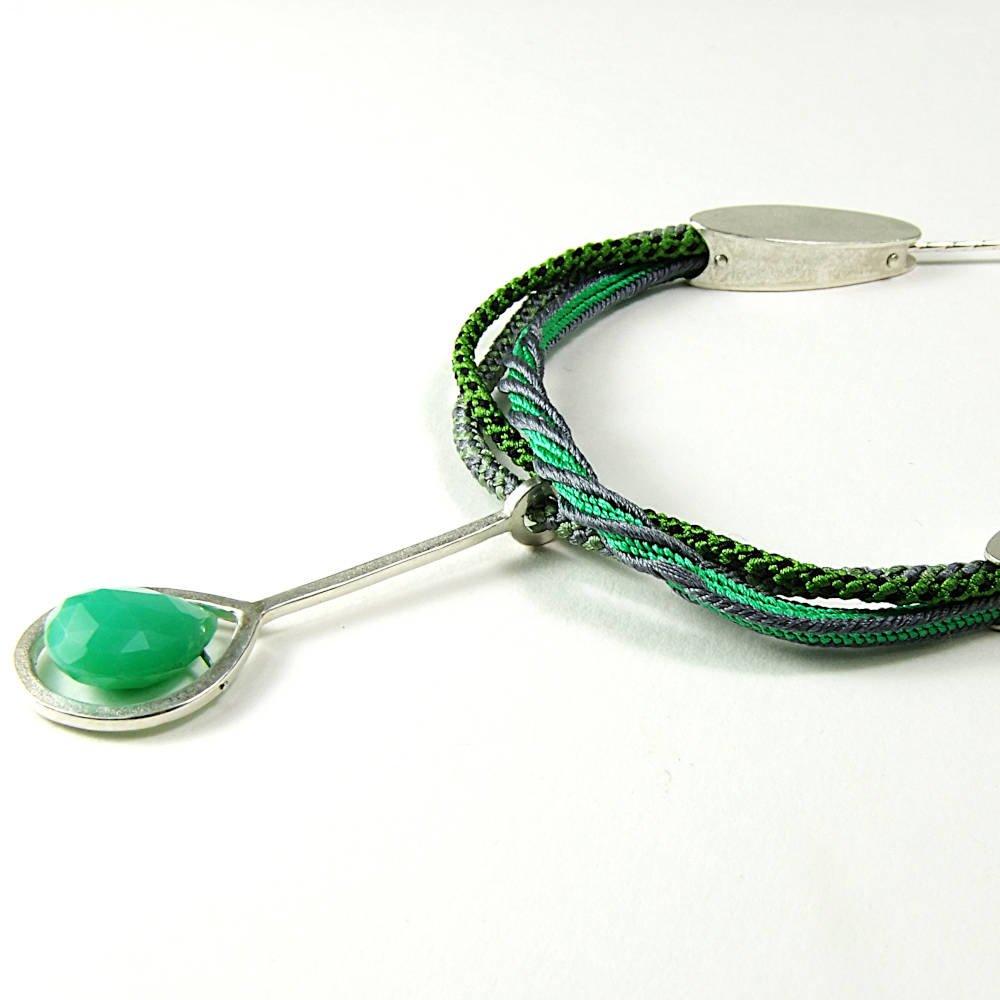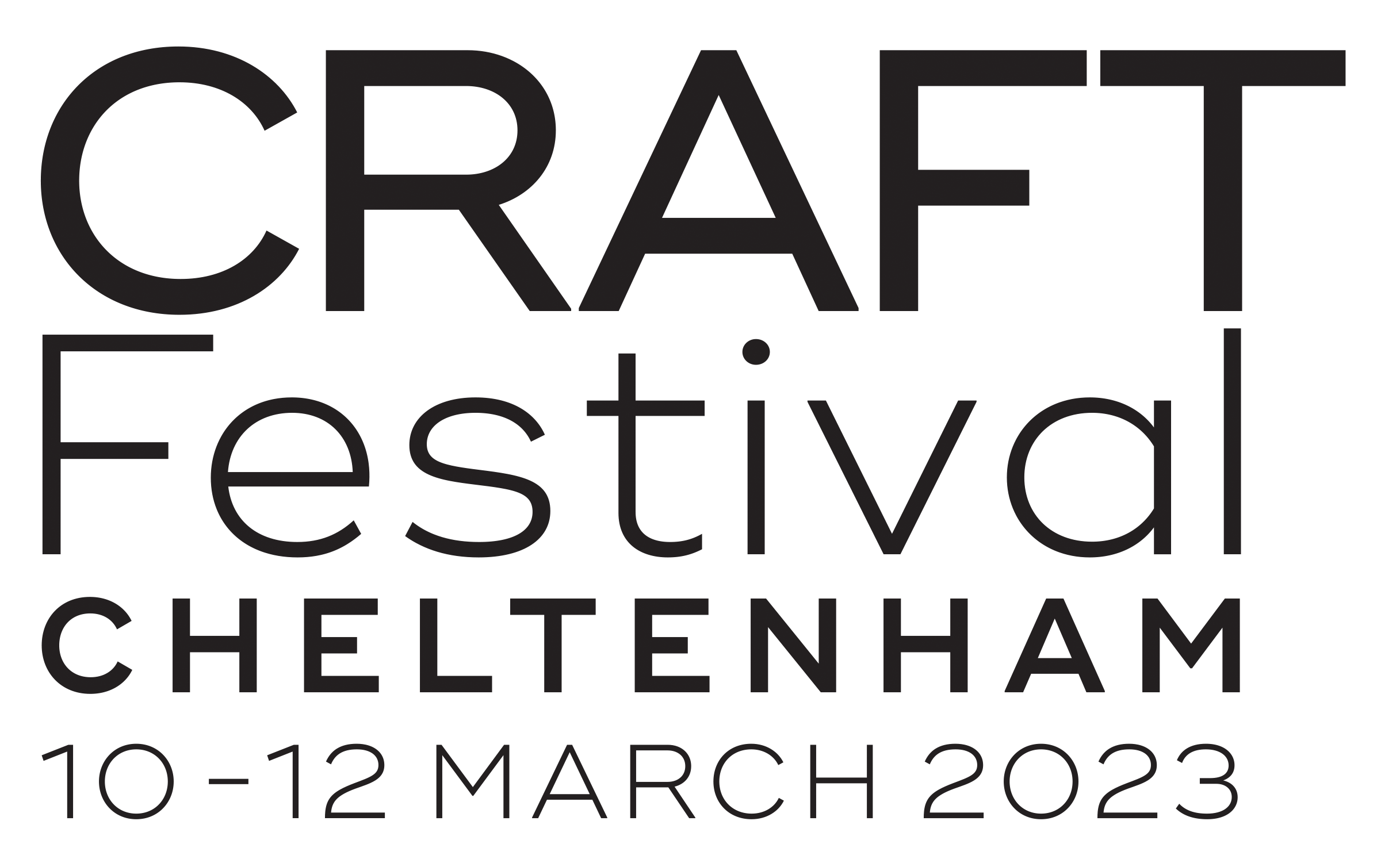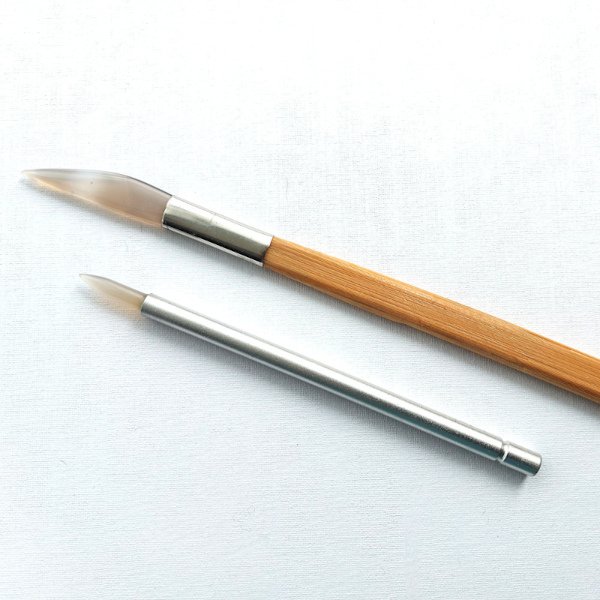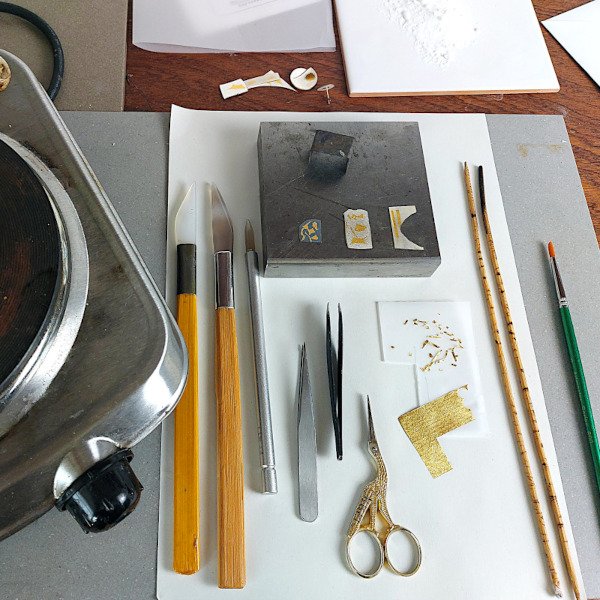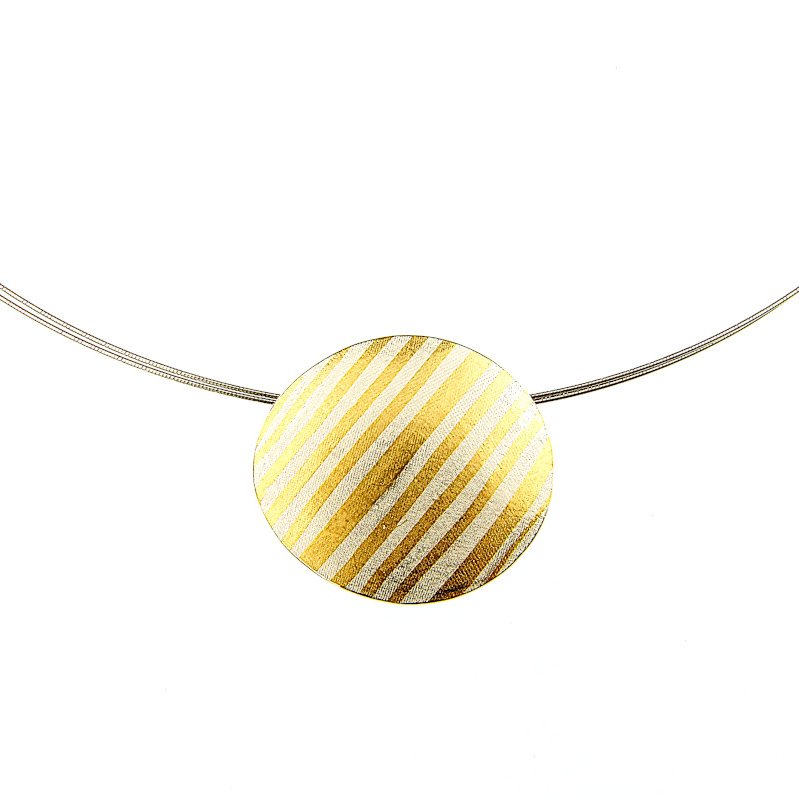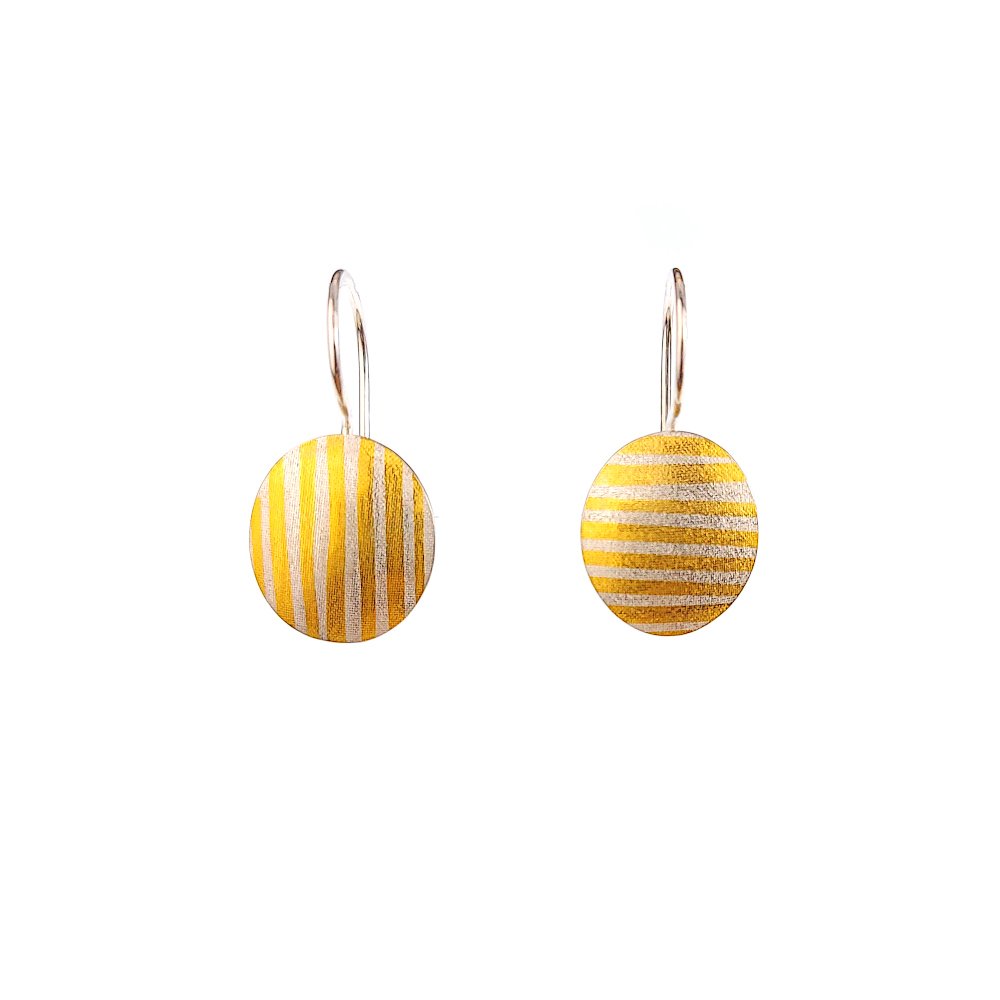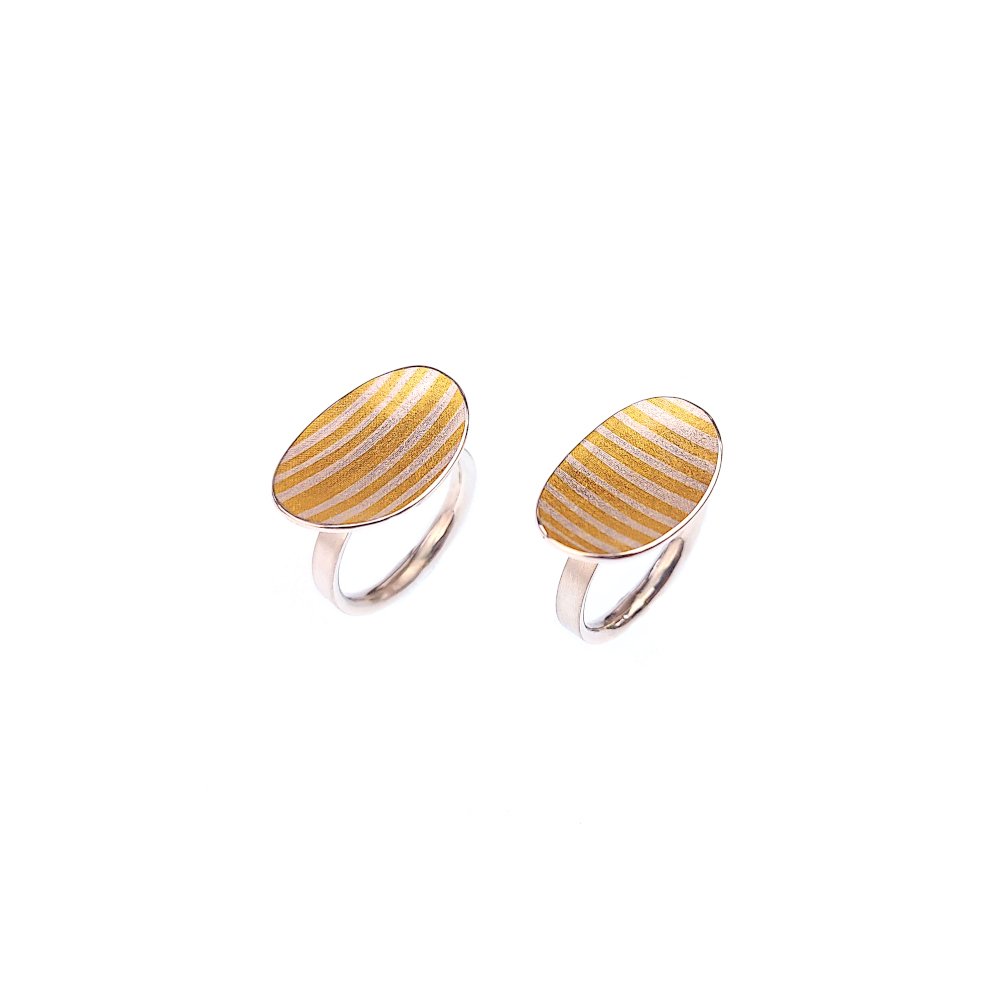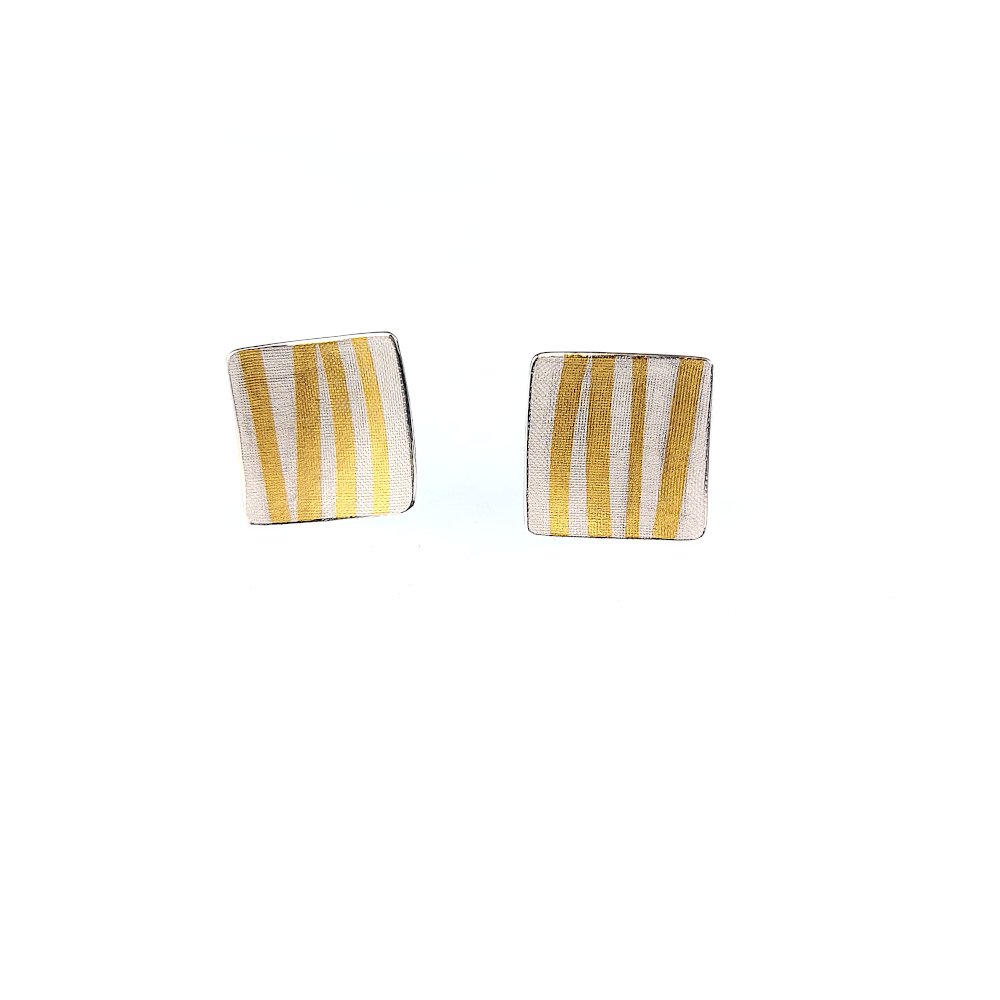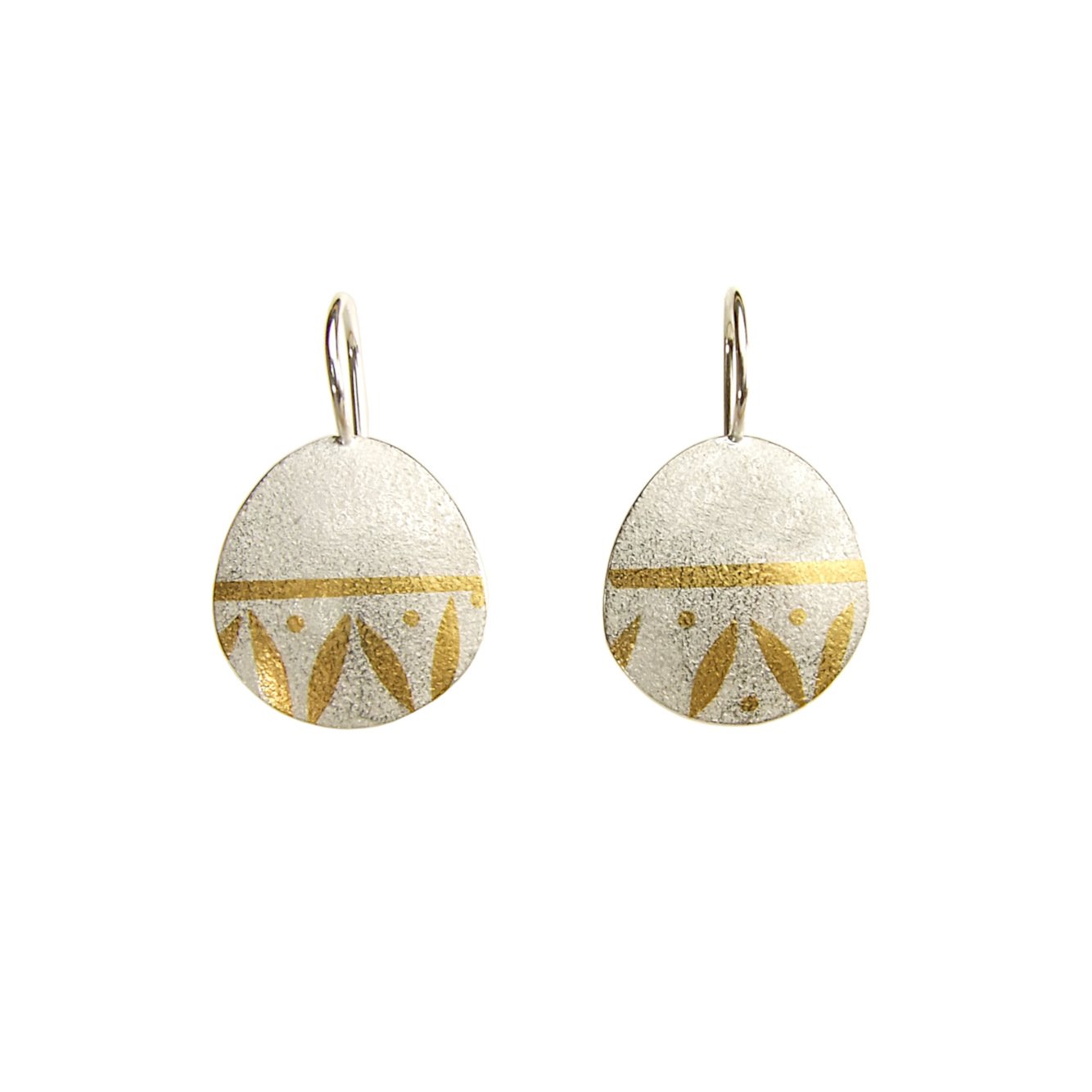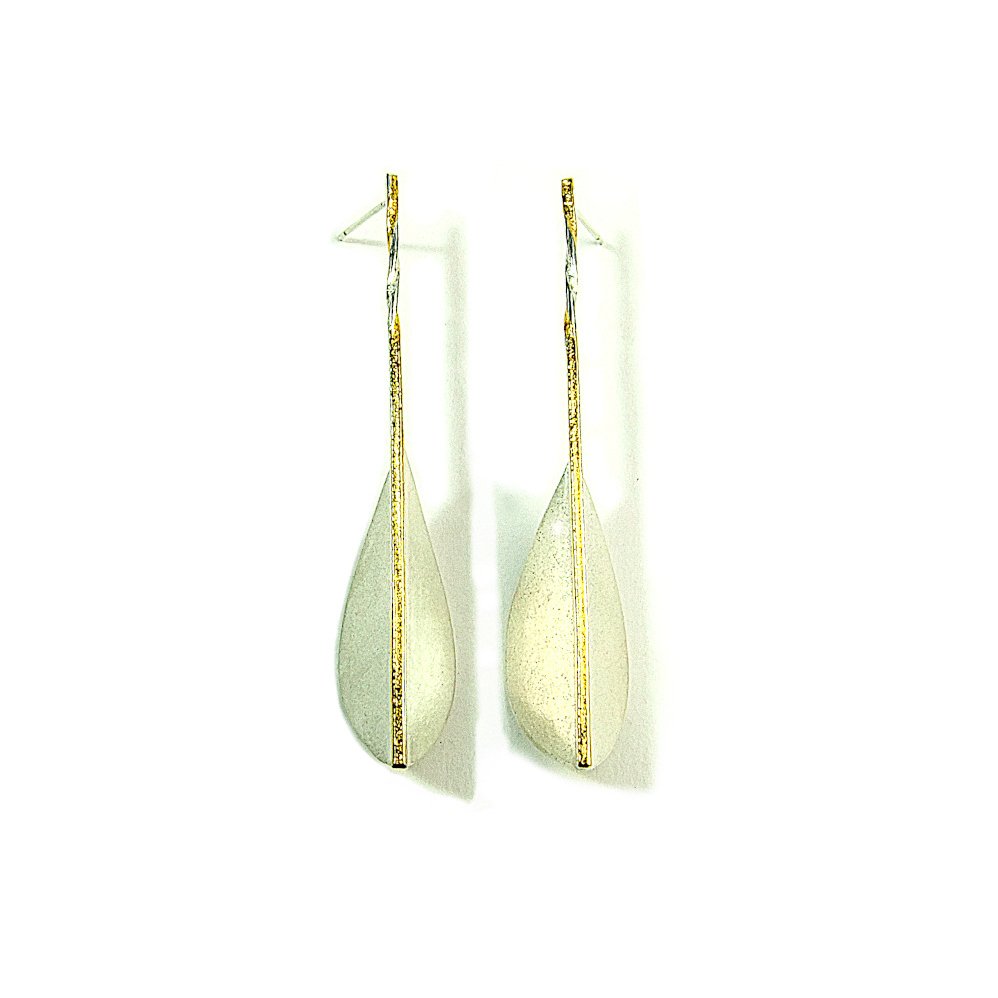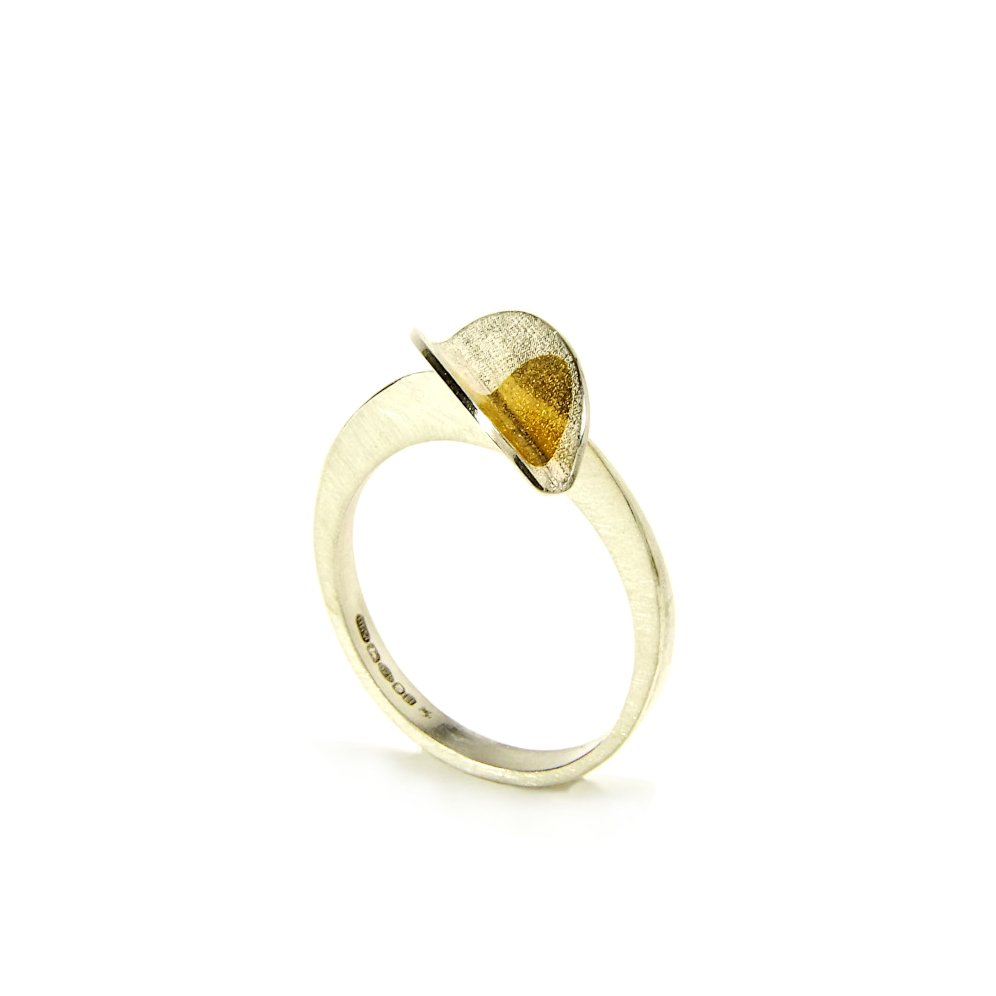The gold foil I use for Keum-Boo is 13 microns thick = 0.013 mm. (The thickness is measured in micrometers, or short microns: 1 micron = 0.001 mm.)
Compared to the thicknesses of 0.5-5 microns for gold plating, this gold foil is quite substantial. In actual fact, when I cut my gold foil pieces I always feel I can sense the weight of the gold when it falls onto the table.
The gold foil I buy is recycled and comes from a Japanese company that recycles gold from the dental industry and from electronic scraps.
I have recently also invested in a digital micrometer so that I am able to recycle and roll down my own gold to the correct thickness.
Keum-Boo Process
Keum-Boo is usually the last thing I do on a piece – in other words, all other fabrication steps have been done before. The silver is then prepared to receive the gold. When using sterling silver (as it is an alloy containing copper) it has to be prepared so that a thin layer of fine, pure silver at the surface is created. This allows the fine gold molecules to bond with the silver. When using fine silver, this step is not necessary as the fine silver is pure and does not contain copper.
Once this has been done, the piece is cleaned with baking soda and methylated spirit. I then cut the relevant shape from the gold foil which requires patience and calmness. (Pet cats that jump onto the worktop with the gold foil laid out should be avoided here, as are open windows and sudden gusts of wind. ;)
During the design stage, I would have finalised the exact pattern I want to create and this will guide me when I am cutting the foil.
When all is prepared, the silver piece is placed on the hot plate and the gold is laid on top. Whilst holding the silver piece in place (and this is often the really tricky bit), the gold is burnished (pressed) onto and into the silver with the agate burnisher.
When I am sure all areas of the gold are properly attached, I remove the piece from the hot plate, allow it to cool and add the finishing touches.
Please note that working over a hot plate involves getting very hot! Therefore, it is most beneficial to do this when one is cold - crouching over a hot plate in the summer and doing a collection of 20 pieces in 30°C is challenging! It is paramount to wear gloves to protect the hands from the heat and ideally a face heat guard to protect the eyes from exposure to heat from the hot plate. The images below show the making process of a pair of square stripy ear studs which are available to buy from my shop.





